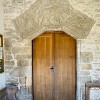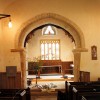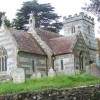Dorset could have played a vital part in a return to Protestant dominance in England in the late 17th century. The Duke of Monmouth arrived on Lyme Regis beach from Holland, impelled by volatile evangelicalism in that country, and soon gathered an army of thousands which marched north, only to be defeated by King James II’s forces at Sedgmoor.
It was an army of peasants or serfs, armed with farm implements, and stirred to action by the death of Charles II and the arrival of a Catholic king on the throne. The attempt, in the summer of 1685, did not have the support of the Whigs as it might have done, and it was cut down among the Somerset rhines, the drainage canals in the moors, by a smaller but more professional force led by John Churchill, later the First Duke of Marlborough.
Monmouth and Lord Grey made for the Dorset coast, hoping to get away by sea from Poole. They abandoned their horses, disguised themselves and separated but Monmouth was caught in Cranbourne Chase and within weeks he was executed for treason at Tower Hill, London.
An associated rising planned in Scotland, a stronghold, like the West Country, of the burgeoning Protestant religion, resulted in defeat. It was left to William III of Orange to sail from Holland three years later, put ashore at Torbay with an army and eventually to be made king by Parliament once James II had sailed away to France.
The political and church scene at this time was mercurial and transient. The Civil Wars, which were intended to straighten things out, were not long over. The death of Oliver Cromwell in 1658 led to the restoration of the monarchy in 1660. Draconian rules were in force governing worship, and Baptists and others were meeting in the woods. A century later the situation was somewhat similar, before there began to be an acceptance of the Roman Catholic Church once again. Things were going round in circles.
One James, Duke of Monmouth, aged 36, bastard son of Charles and claiming the throne in the place of his uncle the Duke of York, had stepped ashore near the Cobb at Lyme Regis, his Declaration was read out at the ancient cross. He had a high profile supporter in Anthony Ashley Cooper, First Earl of Shaftesbury. Monmouth’s followers were euphoric, yet there were many Dorset men in the king’s forces, which were soon to harry them.
The end was very violent and very sad. At the Bloody Assizes in September 1685, based in Dorchester, Lord Chief Justice Jeffreys took revenge in a courtroom said to have been draped in red. The Oak Room, still preserved, and now a rather select tearoom, overlooks an alley thoroughfare not far from the town’s tourist information centre. The judge’s lodgings in the town’s main street are also now tearooms. Altogether 292 people were condemned to death and 800 were transported to the New World.
Four years later, following William’s “Glorious Revolution”, the ‘hanging judge’ himself died rather ignominiously in the Tower of London.
Everything was against Monmouth: a badly equipped army, quarrelling amongst his chief officers, poor preparation, and an inept skirmish at Bridport. By midnight on the landing date Mayor Gregory Alford of Lyme Regis was at Honiton ordering an express message to Whitehall, and two Lyme Customs officers were also on their way to London to raise the alarm.
Taunton and Bridgwater welcomed the rebels with flower lined streets. The rebels wished to take Bristol, then the second city in the kingdom, but were easily discouraged and made their way through Frome and Shepton Mallet to Wells, and to Bridgwater again. By this time the people were losing heart and Taunton asked the rebel army not to return.
Monday July 6th 1685 decided things. Monmouth decided to attack the king’s army near Weston Zoyland, but was defeated by the rhines and the accidental or treacherous firing of a pistol in the dark by one of his own side.
The duke had hatched his plans with the fugitive Argyle and some hotheads in the Netherlands. Argyle was to start an insurrection under the Covenanting banner in the Borders and Campbell territory. The idea was that they would then both march on London. Argyle landed in Kintyre but the Marquis of Atholl occupied the countryside there and he was eventually captured when approaching Glasgow, and executed.
This activity north of the border had caused Parliament to vote money for a professional army. More troops came from the Continent, and help even came from William, showing that while their aims were similar, he had no time for Monmouth.
The strange thing is that four years earlier; Monmouth had toured the West Country and was led to expect massive support from the gentry. But his ragged army was one mostly of farm labourers and cloth workers. Even the supplies he had brought from Holland were seized.
Later, hundreds were caught as they ran from the battleground, cut down or hanged on the spot. A garrison newly returned from Tangiers was sent in, and retribution in nearby towns such as Shepton Mallet and Taunton followed.
Maurice Ashley, in “The English Civil War” (1974) set the scene for the Monmouth fiasco and what followed very well:
“Lastly, because Parliament won the civil wars it henceforward became an unchallengeable part of the British constitution. The Church of England ceased to be the sole religious institution because, in spite of heavy penalties imposed upon them, dissenters – known as nonconformists – emerged as a permanent feature of public life and influence on society.”
There was never to be another civil war in England. And when it began to seem that Roman Catholicism would hold sway again, along came William of Orange with his armed force to reverse the situation again. King James II fled to France and the nation remained Protestant.



